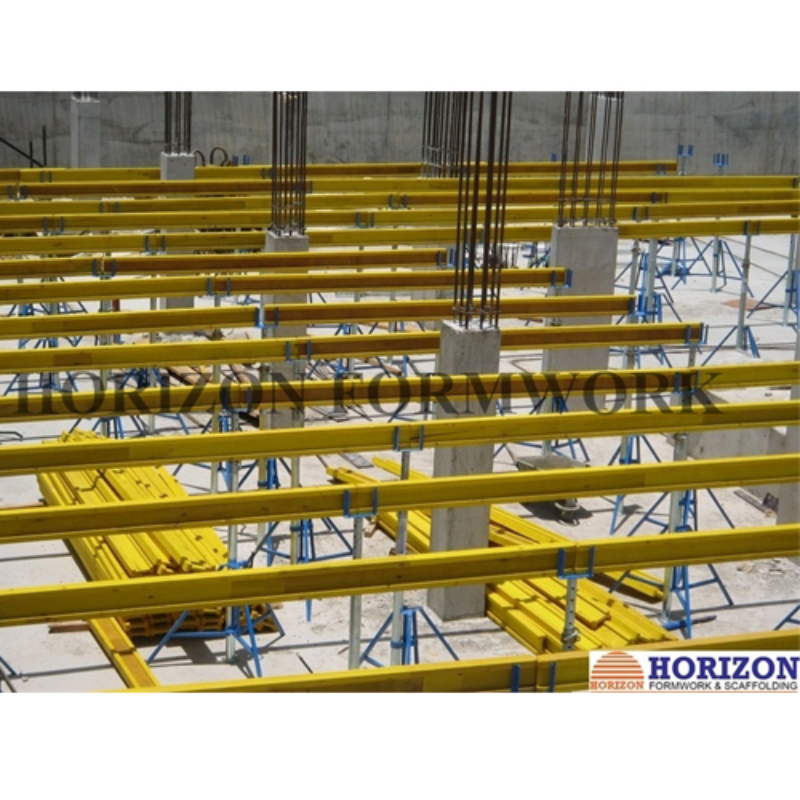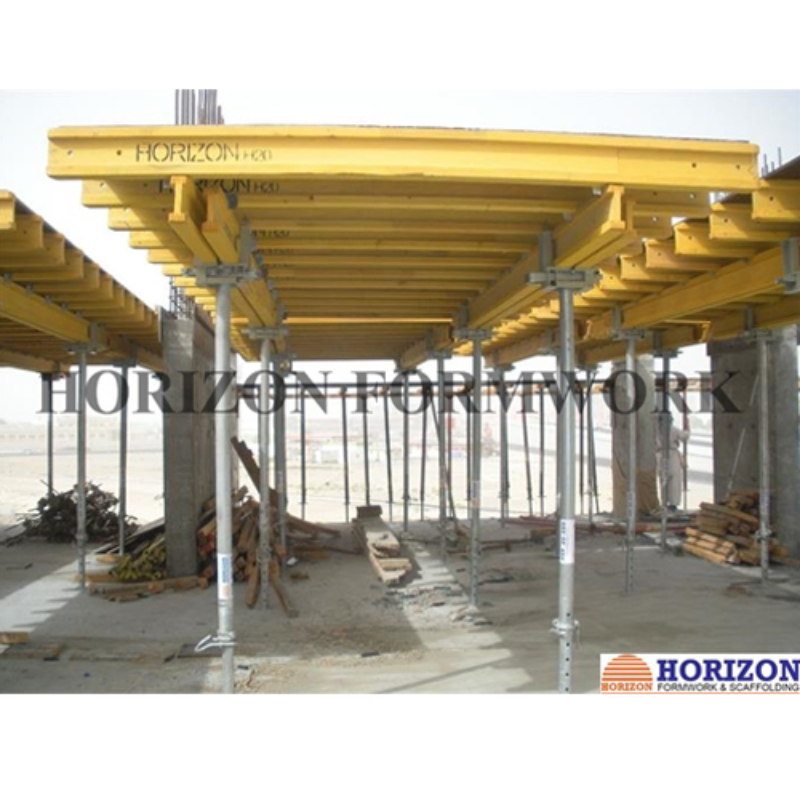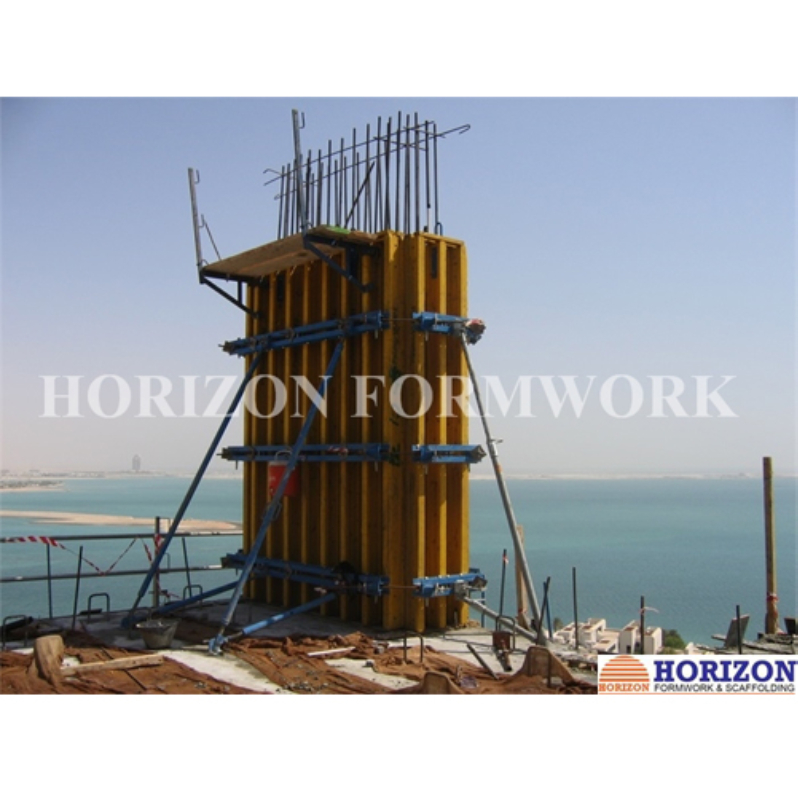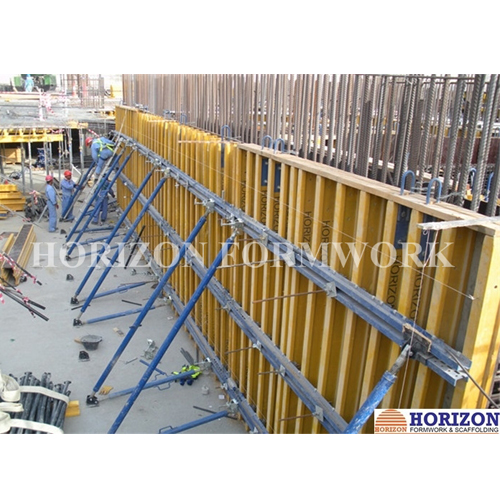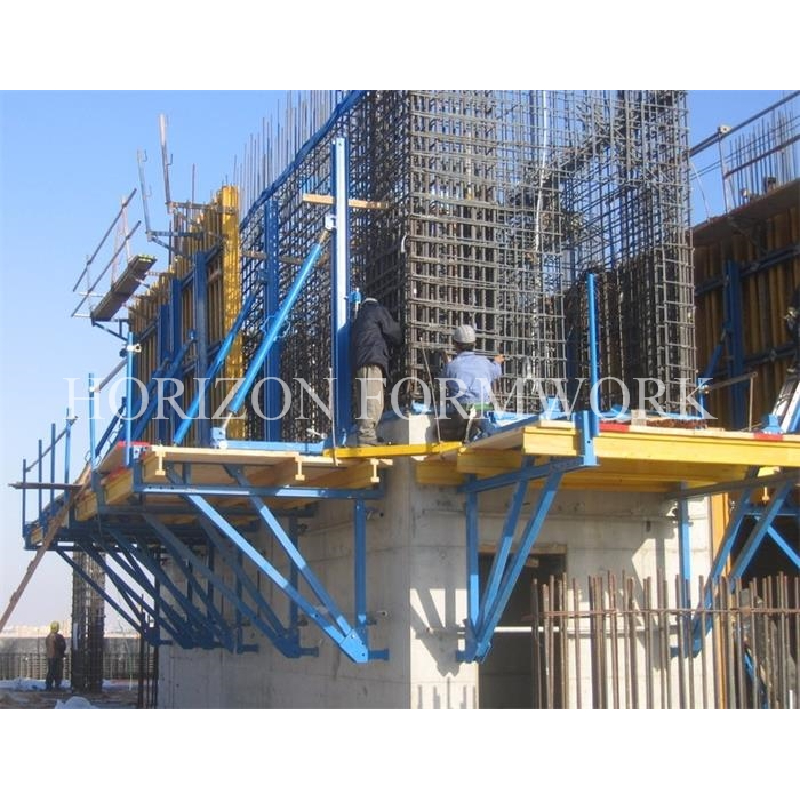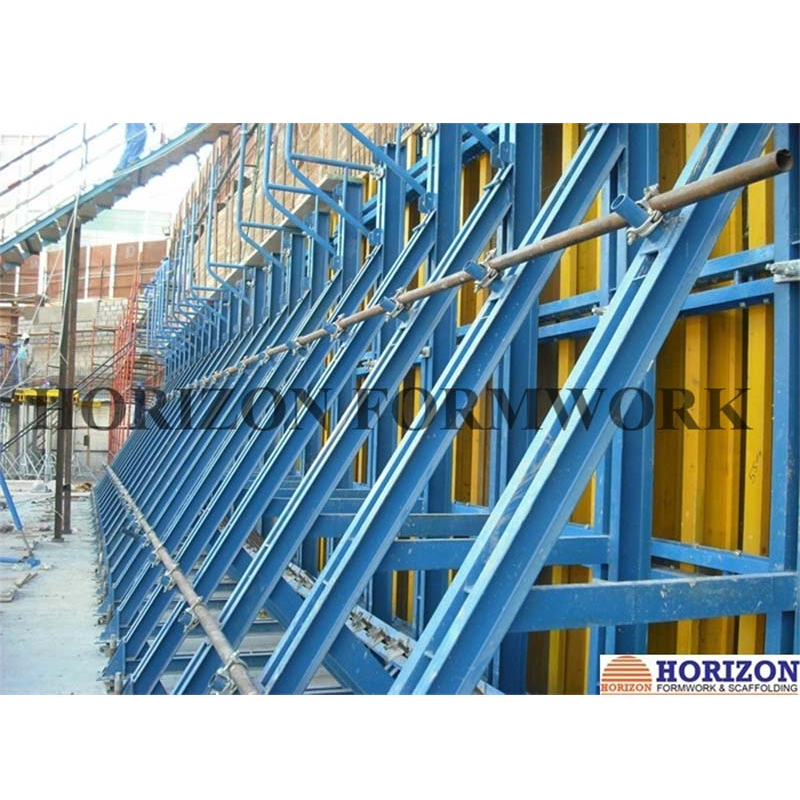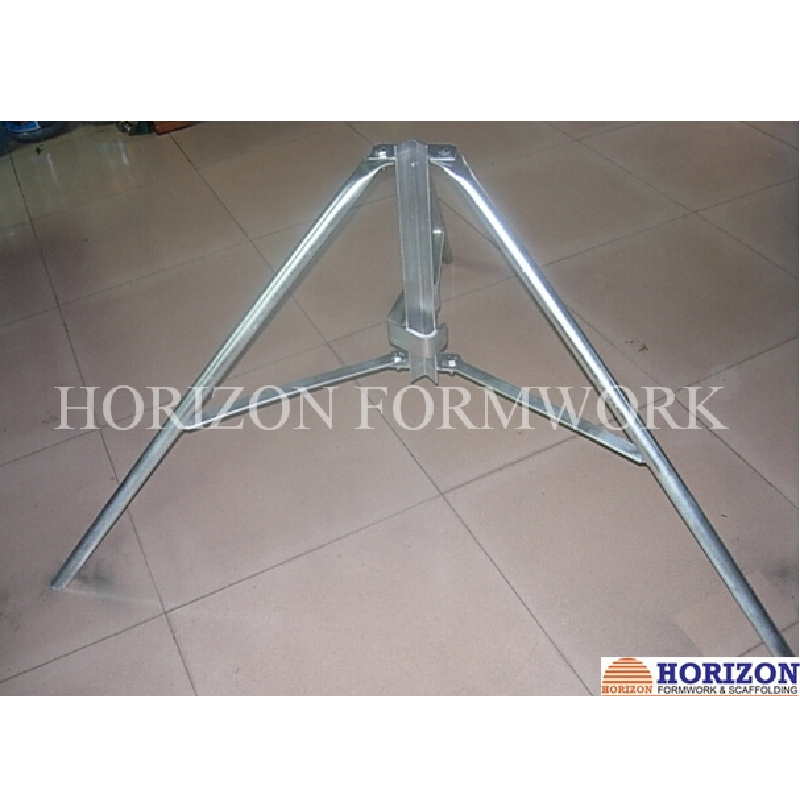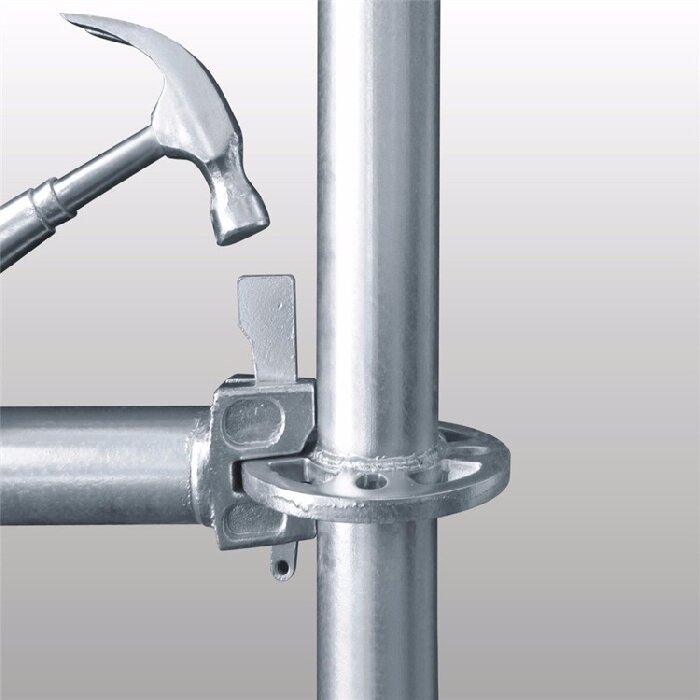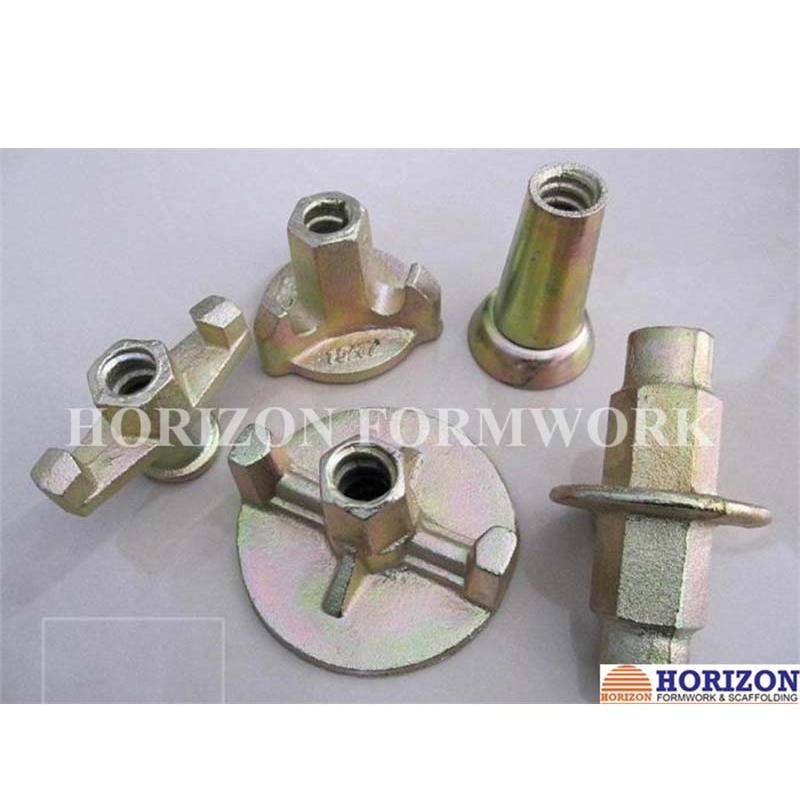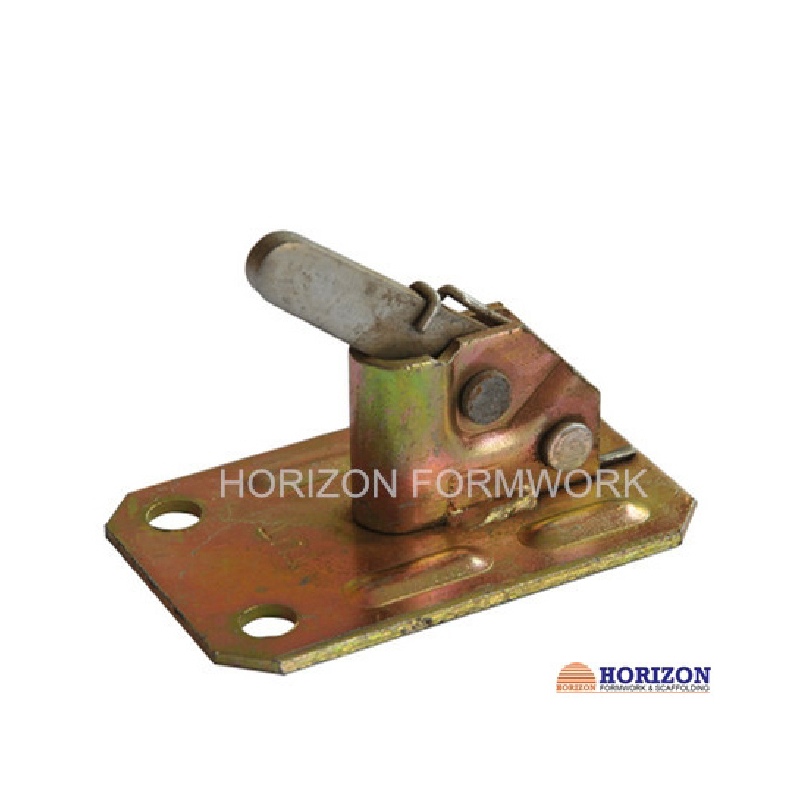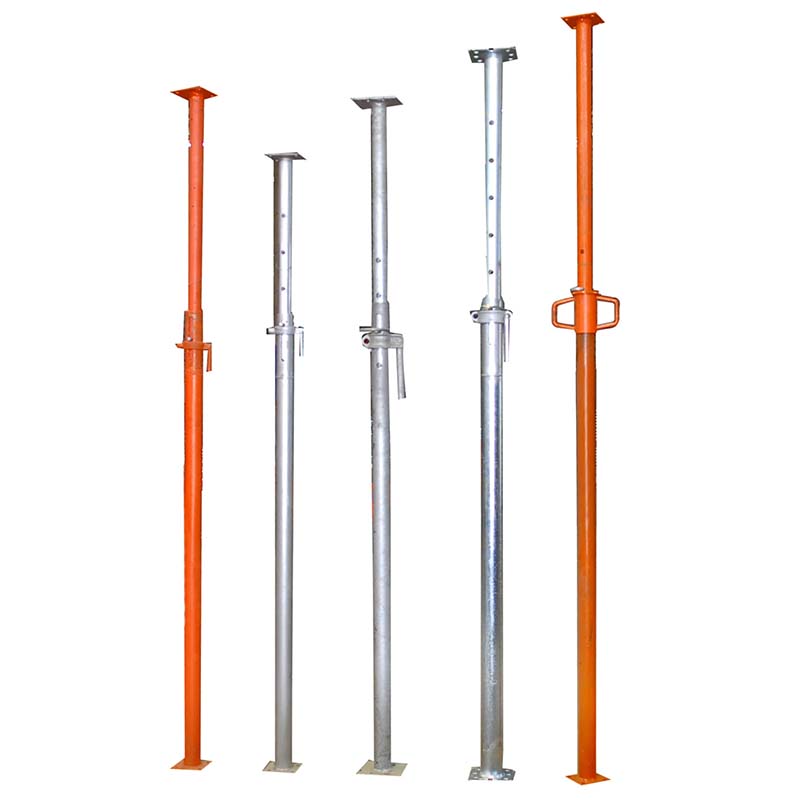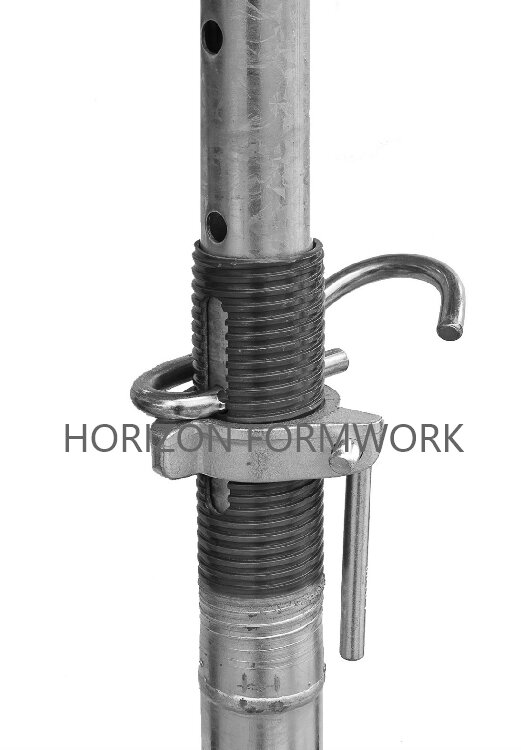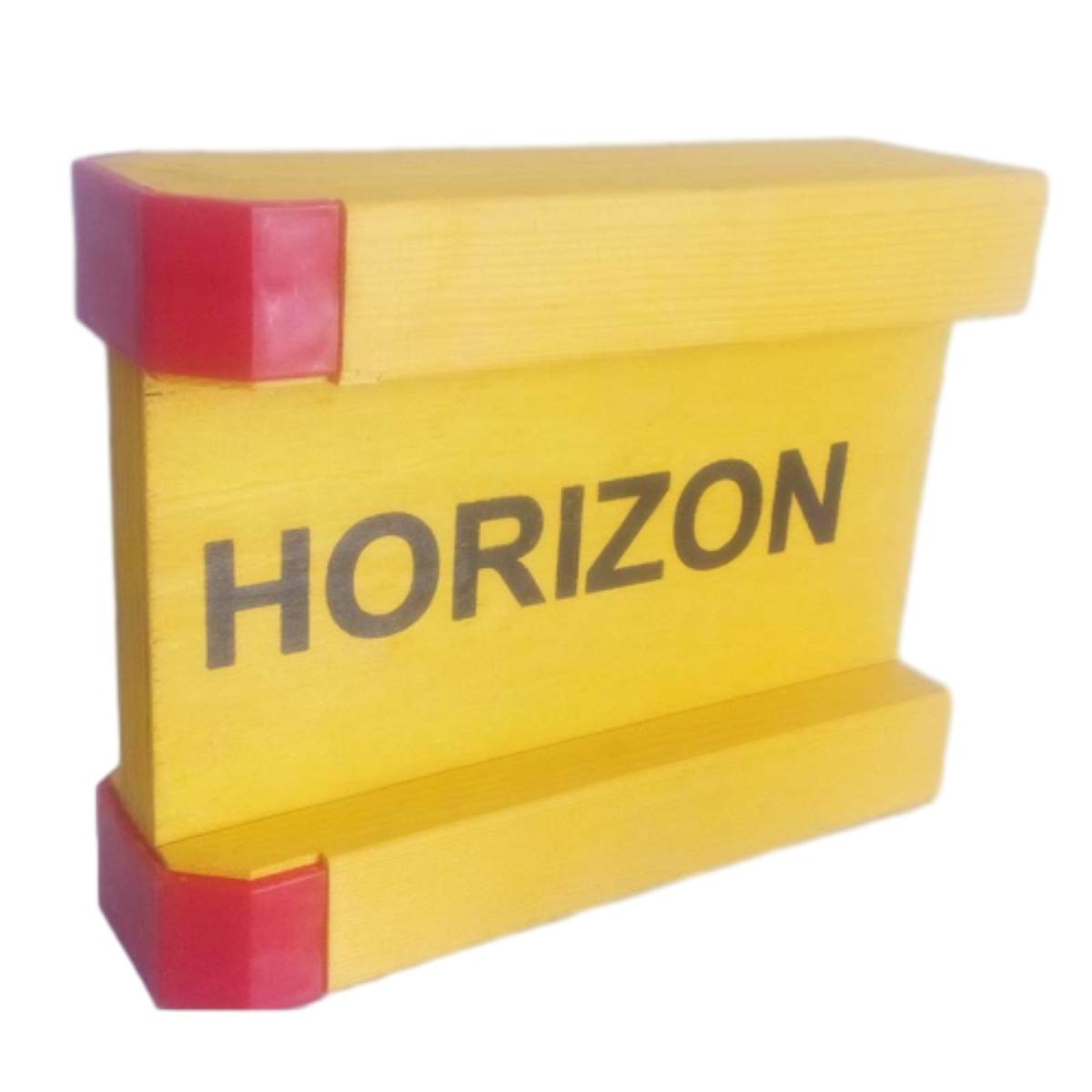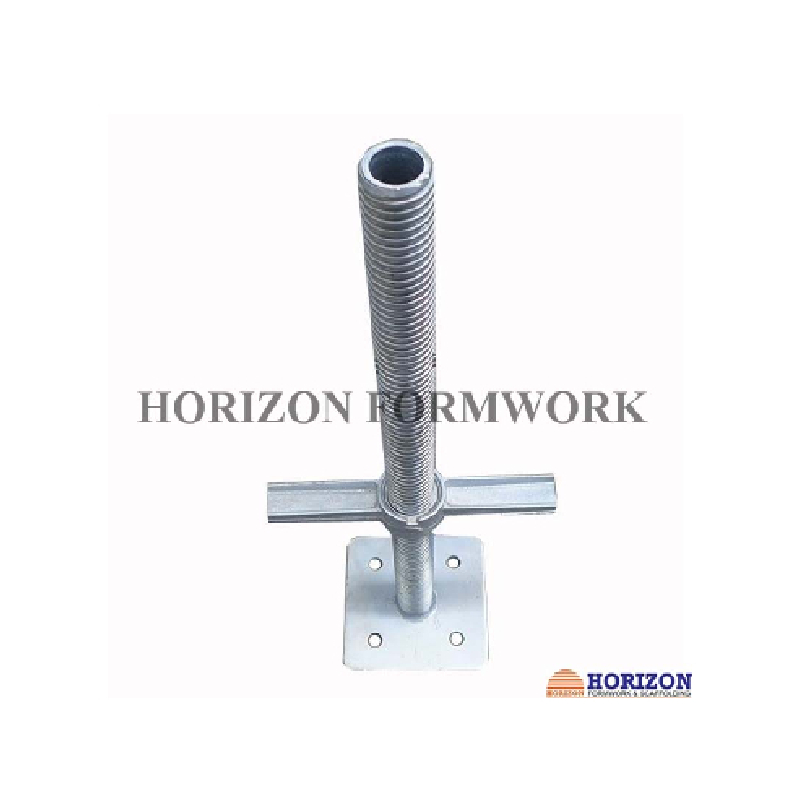Tag/circular column formwork
Produtct Title
circular column formworkRelated News
-
2025-01-13Development Trends of Building formwork ProductsBuilding formwork are an indispensable part of construction, and their development trends directly reflect the direction of the construction industry. In recent years, with the continuous promotion of concepts such as green buildings and energy conservation and emission reduction, building formwork have also shown a development trend of environmental protection, efficiency, and intelligence.
-
2024-01-31formwork-What is formwork?The term 'formwork' referst to a temporary mould into which concrete is poured and formed so that it can set to the required shape. Traditional formwork is fabricated using timber shuttering, but it can also be constructed from steel, glass fibre reinforced plastics, plywood and other materials.Shuttering is most common type of formwork, constructed on site using timber and plywood. A special grade of plywood is necessary for shuttering, as it must be water-resistant. Shuttering is relatively easy to produce, although it can be time consuming for large structures or complex shapes. This type of temporary formwork is used when the labour costs are lower than the cost of producing re-usable formwork from materials such as steel or plastic.
-
2024-01-31formwork-What is the definition of formwork?Formwork means the surface of the form and framing used to contain and shape wet concrete until it is self-supporting.Formwork includes the forms on or within which the concrete is poured and the frames and bracing which provide stability. Although commonly referred to as part of the formwork assembly, the joists, bearers, bracing, foundations and footings are technically referred to as falsework.Formwork construction may involve high risk activities like operating powered mobile plant like cranes, working at height and excavating foundations.Safe work method statements (SWMS)If the work involves high risk construction work, a SWMS must be developed in consultation with workers and their representatives who are carrying out the high risk construction work as defined under the Work Health and Safety (WHS) Regulations.A safe work method statement is a document which outlines the steps in which a task needs to be performed and the hazards and controls necessary to help make the work safe.
-
2024-01-31formwork-Traditional slab formworkFormwork may be made of wood, metal, plastic, or composite materials:Traditional timber formwork. The formwork is built on site out of timber and plywood or moisture-resistant particleboard. It is easy to produce but time-consuming for larger structures, and the plywood facing has a relatively short lifespan. It is still used extensively where the labour costs are lower than the costs for procuring reusable formwork. It is also the most flexible type of formwork, so even where other systems are in use, complicated sections may use it.Engineered Formwork System. This formwork is built out of prefabricated modules with a metal frame (usually steel or aluminium) and covered on the application (concrete) side with material having the wanted surface structure (steel, aluminum, timber, etc.). The two major advantages of formwork systems, compared to traditional timber formwork, are speed of construction (modular systems pin, clip, or screw together quickly) and lower life-cycle costs (barring major force, the frame is almost indestructible, while the covering if made of wood; may have to be replaced after a few - or a few dozen - uses, but if the covering is made with steel or aluminium the form can achieve up to two thousand uses depending on care and the applications). Metal formwork systems are better protected against rot and fire than traditional timber formwork.Re-usable plastic formwork. These interlocking and modular systems are used to build widely variable, but relatively simple, concrete structures. The panels are lightweight and very robust. They are especially suited for similar structure projects and low-cost, mass housing schemes. To get an added layer of protection against destructive weather, galvanized roofs will help by eliminating the risk of corrosion and rust. These types of modular enclosures can have load-bearing roofs to maximize space by stacking on top of one another. They can either be mounted on an existing roof, or constructed without a floor and lifted onto existing enclosures using a crane.[citation needed]Permanent Insulated Formwork. This formwork is assembled on site, usually out of insulating concrete forms (ICF). The formwork stays in place after the concrete has cured, and may provide advantages in terms of speed, strength, superior thermal and acoustic insulation, space to run utilities within the EPS layer, and integrated furring strip for cladding finishes.Stay-In-Place structural formwork systems. This formwork is assembled on site, usually out of prefabricated fiber-reinforced plastic forms. These are in the shape of hollow tubes, and are usually used for columns and piers. The formwork stays in place after the concrete has cured and acts as axial and shear reinforcement, as well as serving to confine the concrete and prevent against environmental effects, such as corrosion and freeze-thaw cycles.Flexible formwork. In contrast to the rigid moulds described above, flexible formwork is a system that uses lightweight, high strength sheets of fabric to take advantage of the fluidity of concrete and create highly optimised, architecturally interesting, building forms. Using flexible formwork it is possible to cast optimised structures that use significantly less concrete than an equivalent strength prismatic section,[1] thereby offering the potential for significant embodied energy savings in new concrete structures.
-
2024-01-31formwork-Formwork vs Falsework: What’s the Difference?You may hear the words ‘formwork’ and ‘falsework’ thrown around on site from time to time. While they both are used to describe supports that help to form concrete, their roles in the process differ immensely.Both falsework and formwork date back thousands of years and have been used to construct buildings, viaducts and bridges for centuries, and they still play an important role as temporary support in construction projects of today.Read on to learn more about how formwork and falsework are different, what they do and how they support buildings, big and small.
-
2024-01-31formwork-What Is Concrete Formwork?Concrete formwork is a mold or frame that holds wet concrete (poured into the formwork) until it dries and creates the desired structure that suits the purposes of a construction project. Concrete formwork can be temporary or permanent. When it is temporary, it is removed once the concrete sets. Temporary formwork is more common than permanent formwork. It can be re-used for other projects once it is no longer needed, which is of great benefit to the contractor. Because of this, temporary formwork can be resold after a project or reused on a later job. Temporary concrete formwork can be made of heavy-duty aluminum, steel, plastic, plywood, or timber. Permanent formwork, which remains in place and becomes a part of the construction after the concrete sets is often made of foam material.The process of using concrete formwork in construction is sometimes referred to as “shuttering.” A major benefit of using concrete formwork is that it aids in achieving a desired concrete shape with a great degree of precision. Use of formwork as opposed to other methods of setting concrete is quick and efficient.
-
2024-01-31formwork-How to Prevent Concrete Formwork Failures in Commercial ConstructionToday’s formwork systems are mostly modular, designed for speed, efficiency, and increased accuracy. Pre-fabricated modules minimize construction waste and include enhanced health and safety features. The two major advantages of pre-fabricated formwork systems, compared to traditional timber formwork, are 1) speed of construction and 2) lower life-cycle costs. Minimal on-site skilled labor is needed to erect and strip pre-fabricated formwork, and modular steel or aluminum formwork is almost indestructible—capable of being used hundreds of times depending on care and application.
-
2024-01-31formwork-Formwork, An Introduction And Some Basic Points.What I am going to be talking about in this section is concrete formwork or shuttering. It is sometimes incorrectly called falsework. It is the temporary, usually timber and plywood mould, that holds the wet concrete in the correct position until the concrete has set and cured.Don't think I have put this shot of a concrete pour in Bangkok here as a bit of a joke. I get visitors from all over the world, and I hope to provide something for everybody. I will be showing modern Australian methods and materials, but I will also try to show people how to do it with only the basics of timber, ply and tie wire or the odd bolt or two.I have worked on very similar jobs myself. We used what we called "bush toms" . They were sapling trees cut down for props, 100mm to say 150mm dia. Shuttering can be done with the simplest of materials. Bear this in mind if you only have a small one off job to do. You don't need to buy expensive formply that is designed for strength and many repetitive uses. Search around for something cheaper. I have used downgraded or cover sheets of MDF for a few odd forming jobs.
-
2024-01-31formwork-What is Formwork?The construction of formwork takes time and involves the expenditure of up to 20 to 25% of the cost of the structure or even more. The design of these temporary structures is made for economic expenditure. The operation of removing the formwork is known as stripping. Stripped formwork can be reused. Reusable forms are known as panel forms and non-usable forms are called stationary forms.Timber is the most common material used for formwork. The disadvantage of timber formwork is that it will warp, swell, and shrink. The application of water-impermeable cost to the surface of wood mitigates these defects.
-
2024-01-31formwork-FORMWORK FOR DECKS AND FLOORSThe fundamental problem in constructing a suspended concrete floor is, as EFCO technical specialist Bob McCracken says, that concrete is very heavy. The other problem, of course, is that until it gets hard, it won’t stay where we want it to be. Therefore, we must construct formwork to keep it in place for as long as it takes to become self-supporting.Traditionally, 4x4 posts and scaffolding were used to support plywood sheets upon which concrete could be placed. But with contractors always looking for a way to build faster and with higher quality, formwork manufacturers have come up with a variety of systems to increase efficiency and productivity in deck forms. The options can be a bit bewildering, with each formwork company proclaiming that its configuration is the best due to this or that feature. Let’s look at some of the available systems and what factors you might consider when buying or renting deck forms.
-
2024-01-31formwork-The Different Types of Concrete Formwork and Their Pros and ConsConcrete formwork is used in a wide variety of construction projects where pouring concrete is involved. Pouring the foundation of a building or structure, such as a house or a bridge, requires concrete formwork. Walls, columns, slabs, and floors made of concrete all utilize concrete formwork for pouring and casting. Beams, girders, and other support structures for buildings and bridges also depend on reliable concrete formwork during the pouring and curing process. Whether you own or rent your equipment, Concrete formwork plays a critical role in ensuring poured concrete takes the desired shape, meets the right dimensions, and has the strength to support intended structural loads.
-
2024-02-27What Is Concrete Formwork?Concrete formwork is a mold or frame that holds wet concrete (poured into the formwork) until it dries and creates the desired structure that suits the purposes of a construction project. Concrete formwork can be temporary or permanent. When it is temporary, it is removed once the concrete sets. Temporary formwork is more common than permanent formwork. It can be re-used for other projects once it is no longer needed, which is of great benefit to the contractor. Because of this, temporary formwork can be resold after a project or reused on a later job. Temporary concrete formwork can be made of heavy-duty aluminum, steel, plastic, plywood, or timber. Permanent formwork, which remains in place and becomes a part of the construction after the concrete sets is often made of foam material.The process of using concrete formwork in construction is sometimes referred to as “shuttering.” A major benefit of using concrete formwork is that it aids in achieving a desired concrete shape with a great degree of precision. Use of formwork as opposed to other methods of setting concrete is quick and efficient.
-
2024-02-277 Things You Should Know About Concrete FormworkThe construction of concrete formwork is no small undertaking; it takes time and can cost up to 25 percent of the total price of the structure. Luckily, stripped concrete formwork can be reused to reduce time and cost. Reusable forms are known as “panel forms,” while non-reusable concrete forms are called “stationary forms.”
-
2024-02-27A Quick Guide to Common Formwork MaterialsConcrete formwork systems are built using a variety of materials. They all have their pros and cons, and different options are better for different projects, site environments, and construction needs. Below is a look at the most common formwork materials and the conditions they’re best suited to.
-
2024-02-27What is Formwork?In a nutshell, formwork is the mold wherein fresh concrete is poured and formed. The mold, which can be permanent or temporary, holds the poured concrete and shapes it until it solidifies and becomes strong enough to support itself and other loads.
-
2024-02-275 ELEMENTS OF SUPERIOR CONCRETE FORMWORKConcrete is the most commonly used man-made material on earth. Given its particular properties, it is also among the most widely employed options for construction. This mixture of cement, sand, gravel and water begins as a wet substance unable to support its own weight, thereby requiring the use of a mold to achieve the desired shape and structure. In construction applications involving concrete, that mold is referred to as the formwork.
-
2024-02-27Formwork vs Falsework: What’s the Difference?You may hear the words ‘formwork’ and ‘falsework’ thrown around on site from time to time. While they both are used to describe supports that help to form concrete, their roles in the process differ immensely.
-
2024-02-27Concrete formwork explainedFormwork is structural and is the term used for specialised concrete construction moulds. Wet concrete is poured into these supportive moulds, which are usually temporary, to set and take form until it can support itself.
-
2024-02-27The Different Types of Concrete Formwork and Their Pros and ConsConcrete formwork is used in a wide variety of construction projects where pouring concrete is involved. Pouring the foundation of a building or structure, such as a house or a bridge, requires concrete formwork. Walls, columns, slabs, and floors made of concrete all utilize concrete formwork for pouring and casting. Beams, girders, and other support structures for buildings and bridges also depend on reliable concrete formwork during the pouring and curing process.
-
2024-02-27Types of Formwork (Shuttering) for Concrete Construction and its PropertiesFormwork (shuttering) in concrete construction is used as a mold for a structure in which fresh concrete is poured only to harden subsequently. Types of concrete formwork construction depends on formwork material and type of structural element.
Related Search
- slab formwork
- wall formwork
- column formwork
- table formwork
- formwork system
- beam formwork
- metal formwork
- timber h20 formwork
- wooden formwork
- steel formwork
- formwork construction
- formwork material
- plastic formwork
- climbing formwork
- frame formwork
- engineering formwork
- horizontal formwork
- vertical formwork
- sliding formwork
- jump formwork
- circular formwork
- formwork accessories
- single sided formwork
- tunel formwork
- concrete formwork
- formwork scaffolding
- formwork prop
- formwork beam h20
- formwork scaffold
- reusable slab formwork

